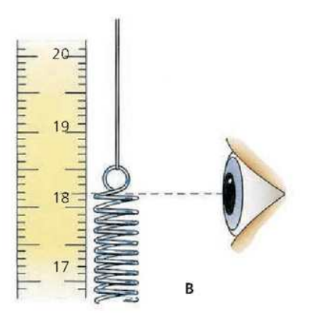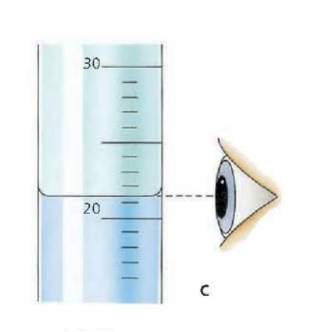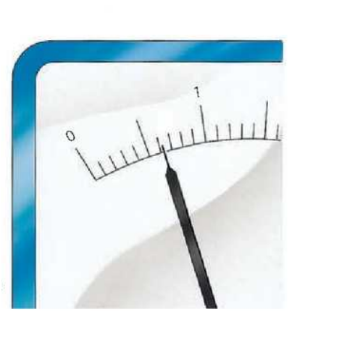Chapter 13: Practical Physics
Working Safety
<<You need to be able to do the following:<<
- Handle materials and equipment safely.
- Follow instructions carefully.
- Change how you carry out each step of an equipment, depending on what happened the time before.
Following explains some reminders about how to work safely with different types of equipment:
[[Bunsen and Tripods[[
- If a bunsen burner is alight, but not in use, always leave it on the yellow flame setting so that the flame can be seen.
- Make sure that bunsen and tripods have a heatproof mat underneath.
- Give a hot tripod plenty of time to cool down before attempting to move it.
- Don't attempt to move a tripod when there is a beaker resting on it.
[[Glass Thermometers[[
- Don't put glass thermometers where they can roll off the bench.
- Keep glass thermometers away from bunsen flames.
- Mercury, used in some thermometers, is toxic. If a thermometer breaks and mercury runs out, don't handle it: ask for help from your lab assistant/technician or teacher.
[[Glass Tubing[[
- Never attempt to push glass tubing (or glass thermometers) through a hole in a bung. The laboratory technician has a special tool for doing this.
- Always handle hot glass tubing with tongs. Rest it on a heatproof mat; don't put it straight on the bench.
- Hot glass tubing can stay hot for a long time. Give it plenty of time to cool down before you attempt to pick it up.
[[Safe Support[[
- When clamping a test-tube, don't overtighten the clamp. And make sure that the clamp has soft pads to touch against the glass. This also applies when clamping a glass thermometer.
- In experiments where you have to suspend a load, make sure that the supporting clamp stand is stable enough to take the heaviest load you will be using. You may need to weigh it down for this, as shown in the diagram on the left.
[[Electricity[[
- Before making any changes to the wiring in your circuits, always switch off the power or disconnect the battery.
- Remember: low voltage circuits may not give you a shock, but they can cause burns if the current is too high and a wire overheats.
- Never make a direct connection across the terminals of a battery. Don't put wires or tools where they might connect across the terminals.
- If a mains appliance is faulty, switch off the power and pull out the plug. Don't change the fuse. Ask the laboratory technician to deal with the fault.
In many modern laboratories, the mains circuits are protected by RCDs (residual current devices), so the risk of shocks is reduced. But…
- if someone has been electrocuted, and is still touching the faulty appliance, don't touch the person. Switch off the power and pull out the plug.
[[Eye Protection[[
- Always wear eye protection (e.g. safety goggles) when:
- stretching metal wires or plastic cords.
- breaking or grinding solids (e.g. rock samples).
- heating liquids.
- dealing with acids, alkalis, or any other liquid chemicals that might splash.
[[Light[[
- Don't look directly into a laser beam or other source of bright light. Don't stand where laser light might be reflected into your eyes.
- If you need to study the Sun's image, project it onto a card. Never look through a telescope or binoculars pointing straight at the Sun - even if there is a filter in front.
[[Radioactive Sources[[
- The radioactive sources used in school laboratories should always be sealed.
- Radioactive sources should be kept well away from the body, and never placed where they are pointing at people.
[[Fire[[
- Don't heat flammable liquids (e.g. methylated spirits) over a bunsen. If heating is required, a water bath should be used - with hot water heated well away from the experiment.
- Don't throw water on burning liquids (e.g. methylated spirits). Smother the fire with a fire blanket or use a carbon dioxide extinguisher.
- Don't throw water on electrical fires. Switch off the supply and use a carbon dioxide extinguisher.
Planning and Preparing
{{Presenting the problem{{
Start by describing the problem you are going to investigate, and the main features of the method you will use to tackle.
{{Making a prediction{{
Make an hypothesis (any prediction you make for the experiment) and note it down. This may not be correct; as its just an idea. The main idea of your procedure is to test it.
{{Dealing with variables{{
{{Quantities like length, mass, current are variables.{{
- Key variables are variables that can affect what happens in an experiment.
- You must also decide how to measure the variables, and over what range.
- Controlling variables are variables that don’t need to be measured, but they do need to be controlled.
- Fair test - when doing an experiment you should change just one variable at a time and find out how it affects one another.
- If lots of variables change at once, it will not be a fair test.
{{Final preparations{{
Decide what equipment you will need, how you will arrange, and how you will use it.
Measuring and Recording
Units
When you write measurements, remember to include the unit.
Uncertainties
No measurement is exact. There is always some uncertainty about it.
Take enough readings
Not all experiments, give you readings for a graph. Sometimes, you have to measure quantities that don’t change.
- In cases like these, you should repeat measurements at least three times and find an average.
- Repeating measurements helps you spot mistakes. It also gives you some idea of uncertainty.
Reading scale
On many instruments, you have to judge the position of a pointer or level on a scale and work out the measurement from that. Here are some ways of making sure that you take the correct reading:
Using a glass thermometer to measure the temperature of a liquid: keep the liquid well stirred, give the thermometer time to reach the temperature, and keep the lamp in the liquid while you take the reading.

Using a ruler: be sure that the scale is right alongside the point you are trying to measure. (Errors due to an incorrect line of sight are called parallax errors.)

Measuring a liquid level on a scale: look at the level of the liquid's flat surface, not its curved meniscus.

Reading a meter: look at the pointer and scale 'square on'.
(The pointer may have a flat end like that shown here, so that you can look at it edge on.)

Dealing with Data
Drawing a graph
- Choosing a graph
- Decide which variable to put along the bottom axis. Usually, it is the one you chose to vary by set amounts the length of nichrome wire, for example. This is the independent variable. The resistance would be the dependent variable because its value depends on the length you chose. It goes up the side axis.
- Choosing scales
- Check your highest readings, then choose the largest scales you can for your axes.
- Labelling axes
- Along each axis, write in what is being measured and the units being used.
- Drawing the line of best fit
- Because of uncertainties, the points on a graph will be uneven. So don't join up the points! Instead, draw the straight line or smooth curve that goes closest to most of them. This is called a ^^line of best fit^^. Before you draw it:
- Decide whether the line should go through the origin.
- Decide whether any readings should be rejected. Some may be so far out that they are probably due to mistakes rather than uncertainties. See if you can find out why they occurred.
Evaluating and Improving
- }}Reliability}}
You may have some results which do not agree with the others and look like mistakes. These are called ==anomalous results.==
- }}Suggesting improvements}}
Having completed your procedure, suggest ways of improving it so that your conclusions are more reliable.
- }}Looking further}}
Suggest some further work which might produce extra evidences or take your procedure further.